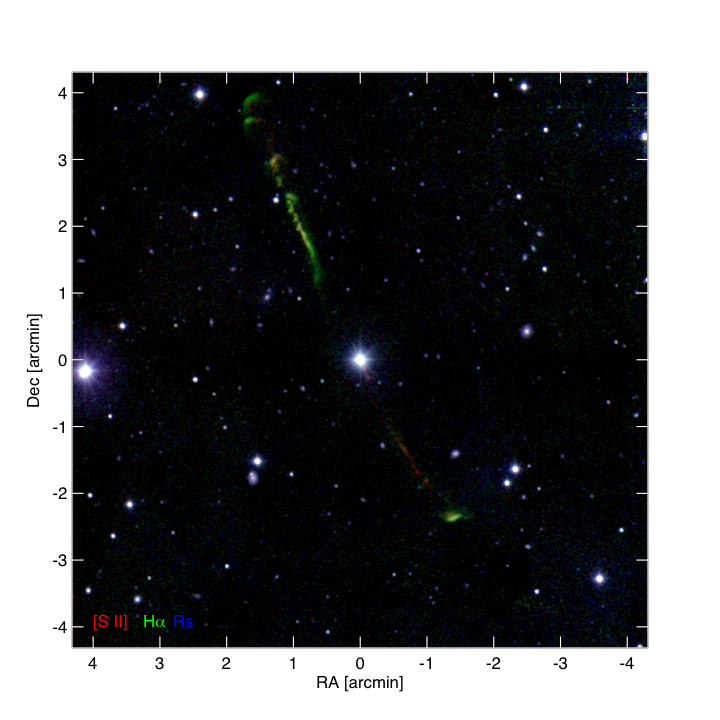Some Stars do it Twice...
An unexpected discovery from my search for dusty main-sequence stars was first-ascent giant stars hosting excess mid-infrared emission. Although surveys in the past have noted far-infrared excess emission toward giant stars (most of which are not from disks of material orbiting the stars), only a few first-ascent giants with bona-fide excess emission emanating from orbiting disks of material were previously known. But, the stars I serendipitously uncovered differed from those previously known: my stars often show signs of active accretion of gas from Keplerian disks and, in many cases, have only recently ceased core hydrogen burning. The circumstellar characteristics of my newly discovered first-ascent giant stars are quite similar to those of young, planet forming, classical T Tauri star systems. It is the rebirth of these giant stars into the characteristics of young stars that has earned them their name: "Phoenix Giants".
The first case of a dusty, accreting giant star came from the study of BP Piscium by Zuckerman, Melis et al. (2008, ApJ 683, 1085). This particular giant star exhibits rapid accretion of gas and dust from a surrounding disk imaged in scattered light and CO radio synthesis imaging. In addition, BP Piscium is launching a spectacular bipolar outflow (Figure 1). BP Piscium's evolutionary status could not be confirmed through the study of Zuckerman et al., thus additional observations were warranted.
Melis et al. (2010, ApJ 724, 470) carried out Spitzer IRS observations of BP Piscium and found a suite of solid-state emission features (Figure 2). These features are reproduced well by a combination of forsterite, enstatite, amorphous magnesium-rich pyroxene, and annealed silica. BP Piscium's spectral energy distribution provides strong evidence that it is likely to be a high luminosity star, a scenario which would seal its status as an evolved first-ascent giant. Combining mineralogy and disk structure inferred from BP Piscium's complete spectral energy distribution led to a unified description of BP Piscium's disk characteristics: a giant planet opens a gap within BP Piscium's disk and induces shocks in the gap walls. Shocked disk material is annealed, converting amorphous material to crystalline material of the forsterite, enstatite, and annealed silica varieties.
Melis et al. (2009, ApJ 696, 1964) present the true prototype of the Phoenix Giant class through the unambiguous identification of a dusty, accreting giant star. This star, TYC 4144 329 2, is part of a wide separation (roughly 6") binary system where the primary, TYC 4144 329 1, is an otherwise normal G8 IV star. From the distance determined to the G8 IV star, I find that the system is roughly 1 billion years old and that TYC 4144 329 2 is an F2 subgiant that has just ceased core hydrogen burning and departed the main sequence. Further searches through the IRAS database reveal almost 20 stars similar to TYC 4144 329 2 and BP Piscium (Melis 2009 PhD Thesis). Intensive follow-up efforts to characterize these sources are underway.
In a recent work we describe the dusty aftermath of a bona-fide binary merger event that occurred in 2008 (Nicholls, Melis, et al. 2013, MNRAS 431, 33). This object provides a direct tie between the Phoenix Giant phenomenon and their precursor binary systems. It furthermore allows an unprecedented window into the formation and early evolution of their circumstellar material. Infrared measurements of the binary merger system suggest dust formation and processing occurs rapidly after the merger event, within a couple of years.

